As we all know, habitat loss is providing problems for much of the UK’s wildlife, but you can do something to help – take steps to make your home and garden somewhere that wildlife can call home. Here are some of the ways you can help:
1. Make life a little easier for hedgehogs
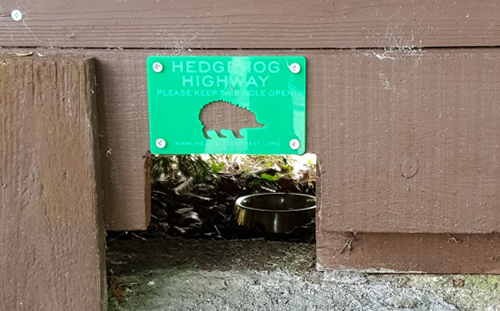
Hedgehogs travel quite a distance at night looking for food or a mate and cutting a hedgehog highway door in your fence will make their life a little easier. (Do speak to your neighbours first to explain why you’re doing it - although it can be small enough to prevent many domestic pets escaping it might not be suitable if there’s a puppy or rabbit in your neighbour’s garden, for example). An even better option if you’re able to is to replace your fence with a hedge using native plants as this will provide nesting spots for birds as well.
Full instructions on making the hole and off the shelf options are given on this Hedgehog Street website.
Of course you can also build "give a 'hog a home" in your garden and feed them.
2. Give bats some room
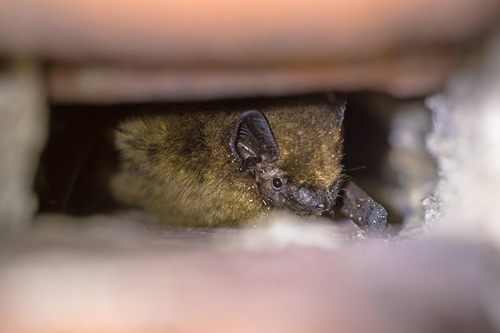
You can encourage bats by providing somewhere for them to stay. There are a wide range of bat boxes available and a number of companies provide custom bricks and tiles that can be built into your property and provide access into the roof void.
Or even build your own bat box (instructions here plus lots of other bat box information.)
N.B. bats are protected by law and if you’re planning on carrying out renovations that will affect any that may be roosting in your property you’ll need to take steps. Visit this Bats Conservation page to find out what to do.
Also see Can I convert my loft if bats roost there
3. Increase the biodiversity in your garden – and dig a pond!
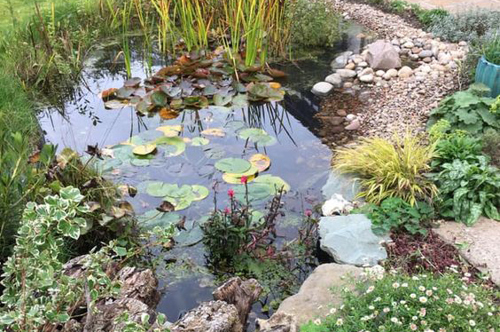
Wildflower lawns, mature shrubs, hedging, mature trees and planting for wildlife are all excellent ways of encouraging wildlife into your garden as they provide food and shelter for all sorts of creatures, but probably the best way you can increase biodiversity in your garden is to build a pond.
Big or small, specially dug and lined with polyethylene or pre-formed liner, or simply a basin sunk into the ground with a few plants in will provide a wildlife haven, drinking and bathing water, and a home for insects and amphibians. Always have a way for wildlife (like hedgehogs) to get out again, in the form of a wooden ramp or “beach” area of pebbles.
Visit this Wildlife Trusts page for advice (and a free booklet) on building a pond
Watch this timelapse video on building a small pond
4. Install a green roof
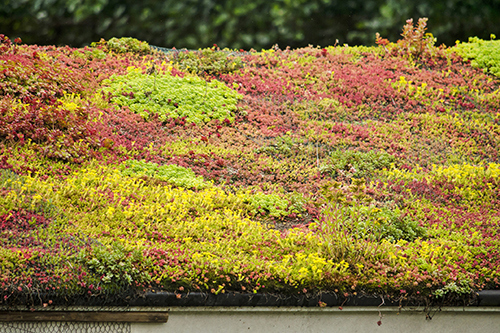
To provide food for bats, birds and the rest consider installing a green roof on your kitchen extension, new garden office, shed or garage conversion. You can install a green roof on any horizontal space of less than ten degrees. You can have an "extensive" green roof which is low cost, low maintenance and consists of plants such as moss, sedum and other succulents, herbs, and grasses. Or a "semi-intensive" roof which can consist of meadow grasses, wildflowers herbs and even small shrubs where you may need to maintain and irrigate periodically. This type of green roof will impose greater loads and will be a bit more costly to install.
Building regulations will apply depending on the load, fire prevention considerations or the disposal of water from the roof, so speak to your local building control team for advice. You should also check with your local planning authority on planning permission and employ someone experienced and competent to install green roofs to minimise the risk of future problems, like leaks.
Further information on green roofs is available here
5. Give our summer residents a home
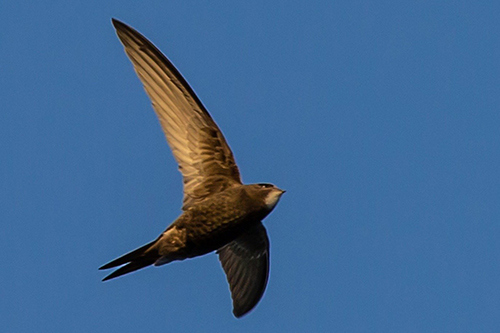
Many people have bird nesting boxes in their gardens, but also consider installing swift nesting places or house martin nests to provide homes for birds which could really do with a helping hand.
If you’re having work done which will cut off access to areas where birds have nested previously, do consider installing boxes or bricks as close to where they previously nested as possible. (And also bear in mind that it’s illegal to disrupt or harm already-nesting wild birds.)
Swift homes
Swift bricks or entrance holes which provide access for the swifts into built-in homes are ideal, but the provision of swift boxes beneath your roof eaves is also a great way of giving them a place to nest after their exhausting journeys from winter homes in Africa. You can make your own nest box or choose from a growing range of commercially made boxes.
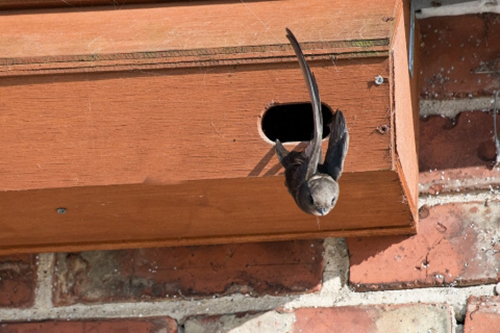
(Pic credited to Peter Smith / https://www.lancswt.org.uk/)
Full details on swift nesting places are available here
House martin homes
House martin nests can also be installed under the eaves (preferably in groups of more than one) and if you’re concerned about droppings (they tend to be a bit messier than swifts) then you can install a piece of wood underneath to catch the mess (or even better some plants which will benefit from the extra fertiliser). Providing a patch of mud in your garden will give them something to build their own homes with to increase the colony.
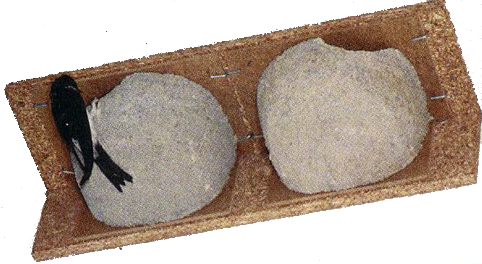
(Pic credited to https://www.nhbs.com)
This RSPB page has further information on encouraging house martins to nest



